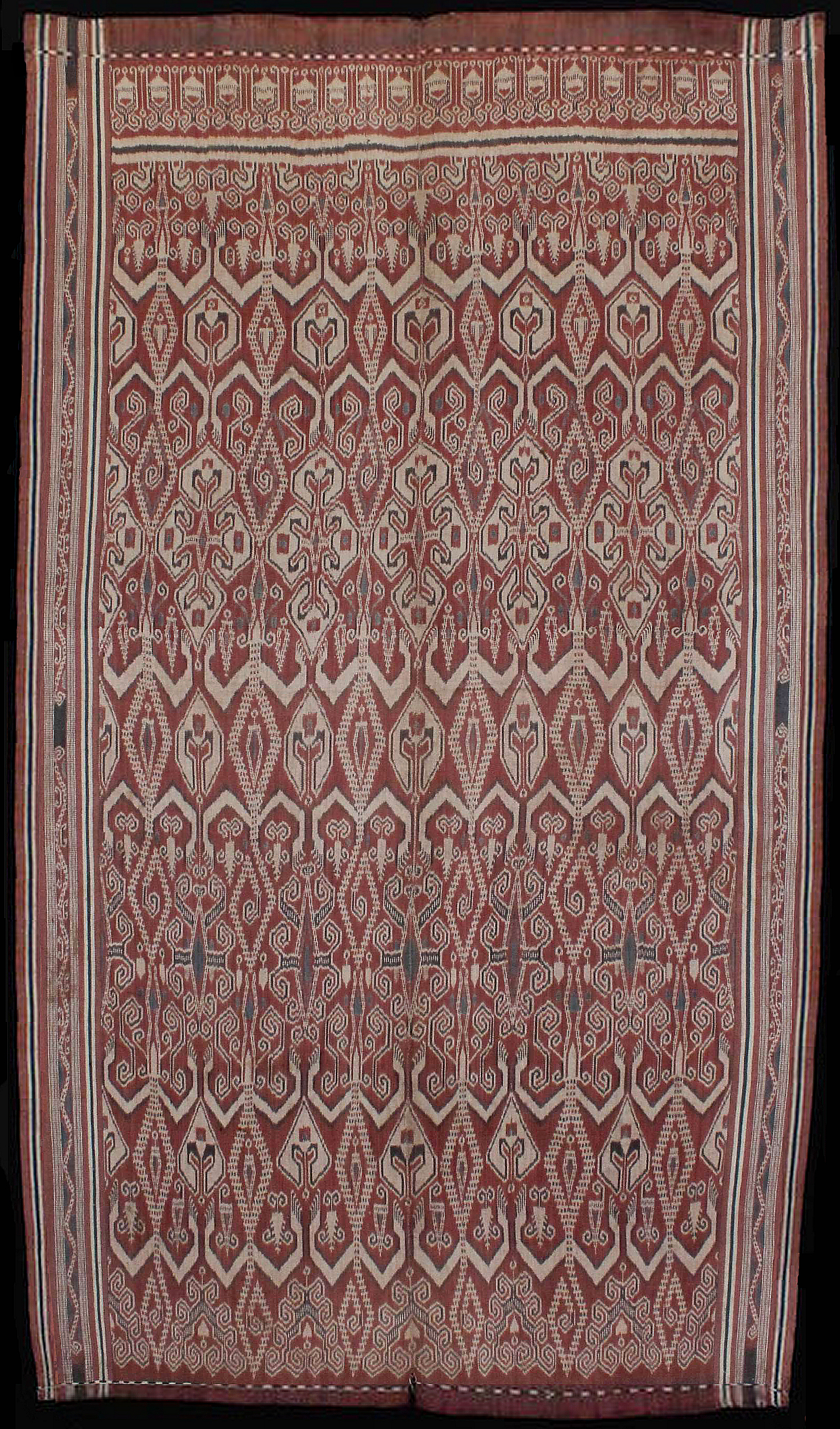| |
 mouse over to magnify mouse over to magnify
| | | | 223 Borneo, Sarawak
Pua kumbu
| | Locale: | Baleh river or one of its tributaries, possibly the Rajang river before it branches to the Baleh. | | Period: | 1920s | | Panels: | 2 | | Design: | Three rows of six stylised monitor lizards, bandau nulang or biyak, their bodies arranged nose-to-tail, the long tails curved into rhomboids. Inside the lozenge-shaped body outlines are small zoomorphic figures. Those in the top row most likely represent birds as they are similar to more explicitly drawn shapes on Kantu pua in Amann collection. The second row shows fish, the third probably rustling birds. Small zoomorphic motifs between legs and bodies, different on each row. Lateral borders with two long snakes. | | Size: | 123 x 216 cm (48.4 x 85 in) | | Weight: | 960 g (361 g/m2) | | Yarn: | Cotton, hand-spun, medium | | Comment: | Old pua from former 7th Division - the more remote, inland area of Iban expansion in Sarawak. Identification of the pattern is tentative. Buah bandau, monitor lizard pattern, a pattern of the second highest order, seems the most likely candidate. This can only be made by a weaver at or close to the level at which she is ready to receive trophy heads. Vegetable dyes only. Ex collection Mark Johnson. Locale confirmed by Steven Alpert. | | Background: | Additional information in chapters on Borneo and Sarawak. | | Compare: | 033 034 035 202 | | Sources: | Locale confirmed by Steven Alpert. Main zoomorphic motif similar to that on Saribas pua with two rather than three rows in Linggi, Iban Ikat Weaving, Plate 61, identified as monitor lizard. Stylistically similar to Kantu pua in Amann collection shown in Khan Majlis, Textiles from Borneo, Plate 30. Similarity of animal head to motif on pua with trophy head pattern in Gavin, Iban Ritual Textiles, Fig. 32 and Fig. 220. Overall design similar to pua with gajai pattern on Fig. 198, but more angular. Fish motif of second row shown on Fig. 121. | | |
 ©Peter ten Hoopen, 2025
All rights reserved.
|
|


